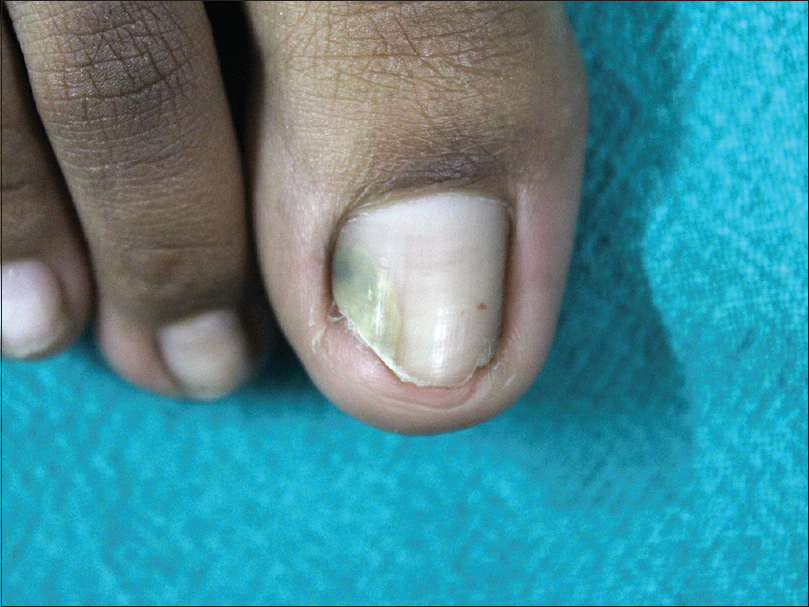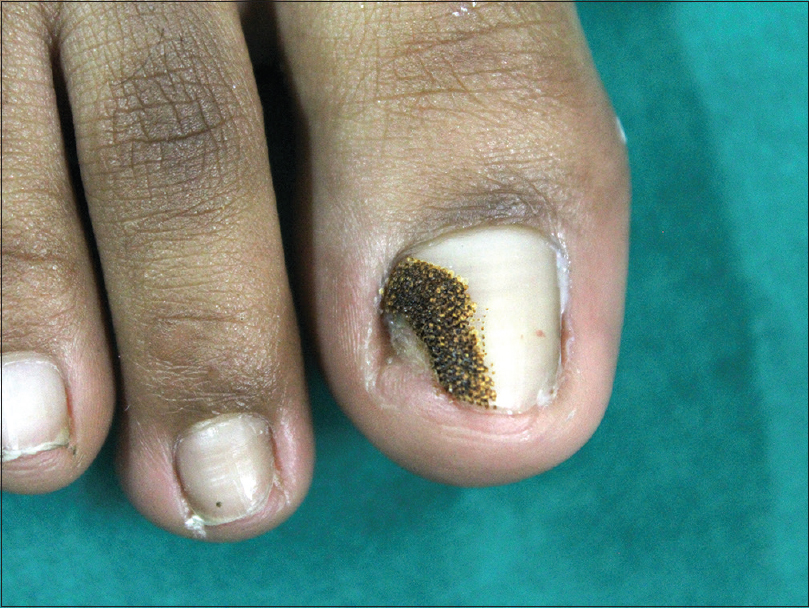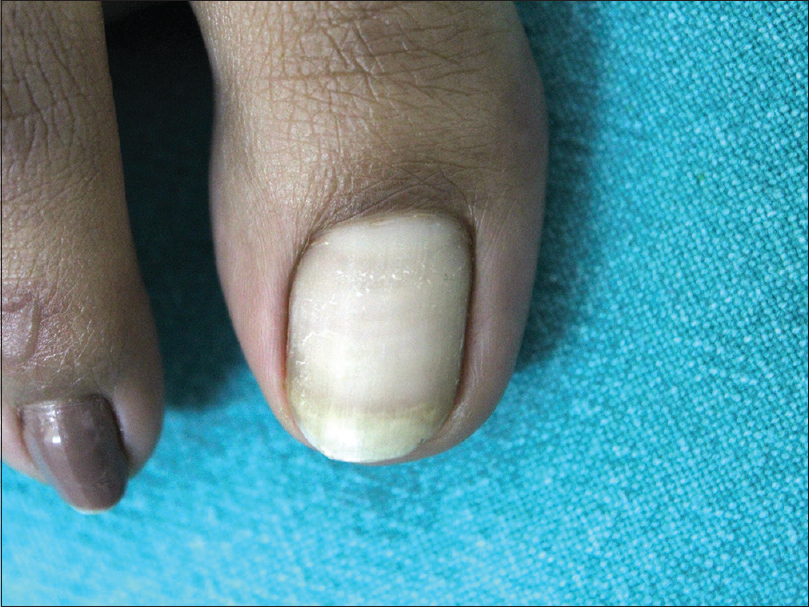Translate this page into:
Urea occlusion prior to single session fractional CO2laser as a treatment in onychomycosis
Correspondence Address:
Sandeep Arora
Department of Dermatology, Command Hospital Air Force, Ulsoor, Bengaluru - 560 007, Karnataka
India
| How to cite this article: Arora S, Ranjan E. Urea occlusion prior to single session fractional CO2laser as a treatment in onychomycosis. Indian J Dermatol Venereol Leprol 2020;86:331-333 |
Problem
Although lasers have been demonstrated to be useful in onychomycosis, management of onychomycosis still relies on oral antifungals and topical lacquer with slow clearance and poor cure rates. Contraindications to oral agents, prolonged treatment and their failure often lead to patient dissatisfaction. Fractional CO2 laser has been used in combination with topical antifungals for three to four sessions administered 4 weeks apart with a reported clearance of onychomycosis.[1] A modification reducing the repeated patient visits, consequent costs and better compliance is thus preferable.
Solution
Fractional CO2 laser utilizes water as its chromophore. In addition, urea, a hygroscopic agent, softens the nail plate and its occlusion helps provide water chromophore at depth, thus enabling the accelerated fungicidal effect of a fractional CO2 laser.[2]
The authors have been administering fractional CO2 laser treatment as a single session following 12% urea occlusion of the affected nail for 24 h with excellent results. The affected nail [Figure - 1]a is cleansed with saline, isolated from surrounding skin by applying a cutout of TegadermTM film [Figure - 1]b and [Figure - 1]c prepared according to the size, followed by application of preformulated 12% urea, and thereafter, occluded with a second layer of Tegaderm™ [Figure - 1]d and dressed in micropore. Next day the occlusion is removed, nail cleansed with saline and a single session of three passes of fractional CO2 laser (Cis F1-Fractional CO2 Laser, Sellas, Korea) using pulse energy of 110 mJ, (256 spots/cm[2], pulse interval of 0.5 mm, pulse duration of 0.1 ms) is administered over the diseased nail including 1mm normal appearing nail surrounding it [Figure - 2] and [Figure - 3]. 1% topical terbinafine cream is advised to be applied twice daily for 3 months. Cases were reviewed once every month. Analysis of Onychomycosis Severity Index score before and 6 months after session showed significant clearance at 6 months [Figure - 4].
 |
| Figure 1: |
 |
| Figure 2: Pretreatment toenail with distolateral pattern of onychomycosis |
 |
| Figure 3: Onychomycosis nail treated with fractional CO2 laser |
 |
| Figure 4: Nail with onychomycosis 6 months posttreatment |
This modality of single session fractional CO2 laser offers an alternative management for onychomycosis.
Declaration of patient consent
The authors certify that they have obtained all appropriate patient consent forms. In the form, the patients have given their consent for their images and other clinical information to be reported in the journal. The patient understands that name and initials will not be published and due efforts will be made to conceal the identity but anonymity cannot be guaranteed.
Financial support and sponsorship
Nil.
Conflicts of interest
There are no conflicts of interest.
| 1. |
Bhatta AK, Keyal U, Huang X, Zhao JJ. Fractional carbon-dioxide (CO2) laser-assisted topical therapy for the treatment of onychomycosis. J Am Acad Dermatol 2016;74:916-23.
[Google Scholar]
|
| 2. |
Glaser HJ, Lockwood AP, Lisy K. The effectiveness of laser treatments for onychomycosis in adults in the community: A systematic review protocol. JBI Database Syst Rev Implement Rep 2013;11:1-5.
[Google Scholar]
|
Fulltext Views
3,726
PDF downloads
1,564





